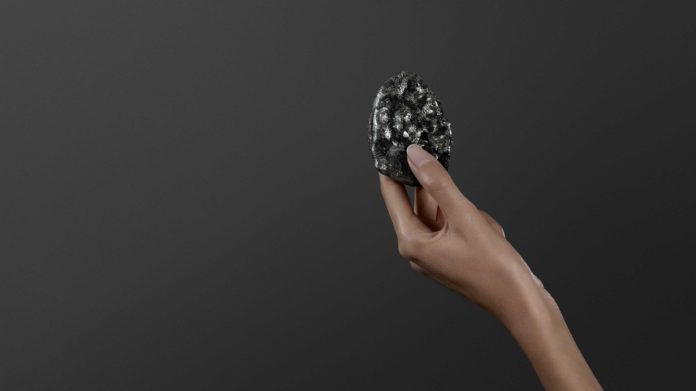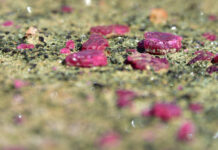
A DIAMOND may be forever, but the routes that the gems take from the mine to consumers are not set in stone.
The traditional site auctions pioneered by De Beers are being bypassed, with gems being sold directly to manufacturers – an almost revolutionary concept compared to ingrained practice.
A trailblazer on this front is Lucara Diamond Corporation, a Toronto-listed company that operates the Karowe mine in Botswana. Lucara last year shook up the diamond sector by agreeing a novel supply agreement with Antwerp-based HB Antwerp. That agreement was extended in April of this year to December 2022.
“Our new supply agreement with HB creates true alignment between the producer and manufacturer for the first time. Rather than Lucara selling our +10.8 carat rough diamonds at the mine gate, we are putting this most valuable part of our production [accounting for ~70% of annual revenues] into manufacturing with HB and receiving final polished prices less a fee and the costs of polishing,” Lucara CEO, Eira Thomas said in an emailed response to questions.
“HB’s fee is based on the final polished price achieved so we are both motivated to maximise the value of each and every diamond. In general, the polished diamond market has performed better than the rough diamond market and has certainly been less volatile,” she said.
A better performance and less turbulence should contribute to delivering regular cash flows and “has the potential for increased revenues over time”.
Another route that Lucara has taken is the digital one. The company is selling rough diamonds through Clara, a web-based digital marketplace where gems from one to 15 carats in size are on offer.
Thomas said it employs technology “… to match individual rough diamonds with specific polished demand from our customers. It creates a much more efficient sales process and eliminates the need to travel to inspect diamonds in person, unlocking significant value for buyers and sellers alike.”
This will have consequences for midstream cutters and polishers. The economic meltdown, triggered by the Great Lockdown in 2020 to contain the Covid-19 pandemic, hit diamond demand and has led to job losses for such artisans in centres such as Mumbai – a trend also seen during the global financial crisis of over a decade ago.
This sub-sector of the industry may remain under pressure as middlemen are cut out through digital and other initiatives.
Market inertia no more
Thomas said Lucara’s novel approaches are also cutting edge on the ESG front – environmental, social and governance concerns. ‘Blood’ or conflict diamonds, for example, remain a public concern.
“One of the real benefits of selling through HB or Clara is that in both cases we are using processes that trace each and every diamond through the sales process. That traceability can also be extended right through the manufacturing process, something consumers today are demanding,” Thomas said.
She went on to say that she sees wider shake-ups to the diamond industry, which are needed to prod it out of its inertia.
“Our industry has been under tremendous downward pressure for years due to our collective inertia. We can no longer harken back to a past era and unwisely cling to processes that haven’t changed in generations. I have been in the industry for 25 years and I believe the best is still to come.”
For its part, De Beers says it is also embracing change.
In a response to questions, the company said: “De Beers Group has for some time now been looking to evolve how it sells rough goods to its sightholders and how to best streamline the process to improve midstream efficiencies.
“As part of this, we introduced a new sightholder supply agreement on April 1 of this year. This new supply agreement sees three different types of customer – integrated retailers, manufacturers, and dealers – and the first of these contract types is designed to allow De Beers to sell rough goods to Sightholders with retail offerings.”
It also said it was considering “what activities can be undertaken usefully during this time even if it’s not what we would usually be doing”.
It said initiatives along these lines include:
- Offering flexibility to its rough diamond customers which would “allow 100% deferrals for several Sights and ongoing flexibility across targeted goods thereafter; provided the option for additional ‘buybacks’ to further enhance supply flexibility, and are hosting viewings in other locations (Antwerp, Dubai) while travel restrictions remain in place”.
- The launching of podcasts to maintain contact with customers and “reduce as much as possible the impact that travel restrictions and remote work” have on the company’s relationships with the wider industry.
De Beers added that: “More generally, we could also see other trends that had already developed now accelerate – this could include the use of online channels for selling, as well as growing consumer preferences for brands with a social purpose … There were already several developments underway in the industry regarding enhancing the role of digital technology in the sales process and we may now well see this accelerate.”
The company still believes that “there will always be a place for sales in physical locations, especially in the diamond industry where seeing the product in real life is so significant”.
So physical sales, where diamonds are painstakingly examined, are not seen to be coming to an end.
But it does seem that they will become a less prominent feature of the industry, which is embracing a wider mix of sales options.
GEM Diamonds and Australian-listed Lucapa, which operate in Lesotho and Angola, are taking initiatives that are similar to Lucara’s: diamonds are taking new routes from the mine to the consumer. The full implications of this trend will become apparent in coming years.
For the full story as it appeared in our 2021 Mining Yearbook, please visit the special ebook section below.












